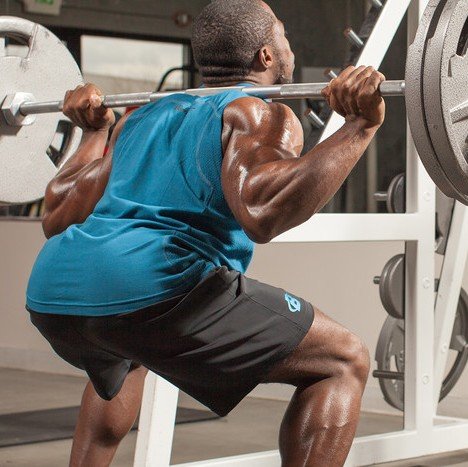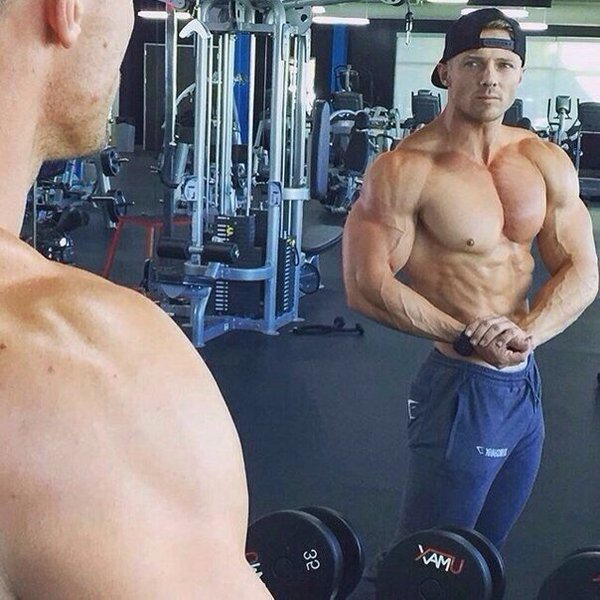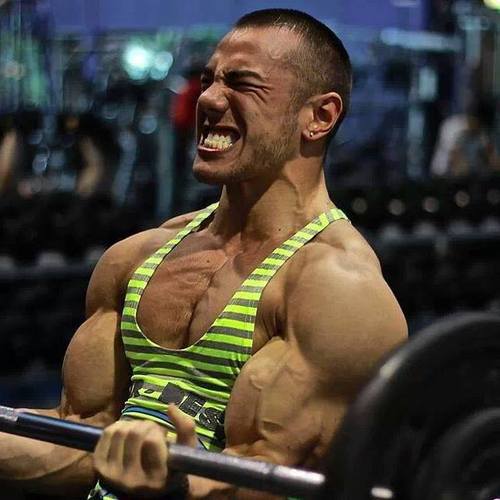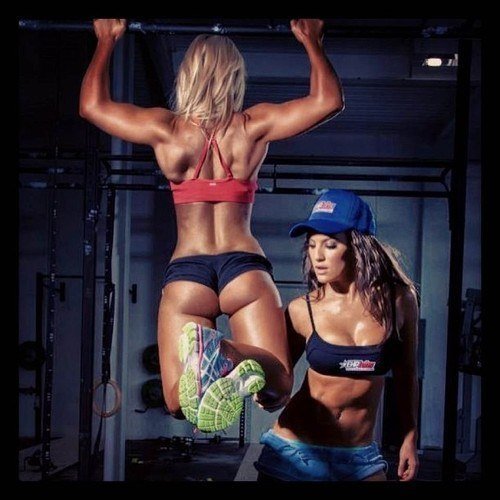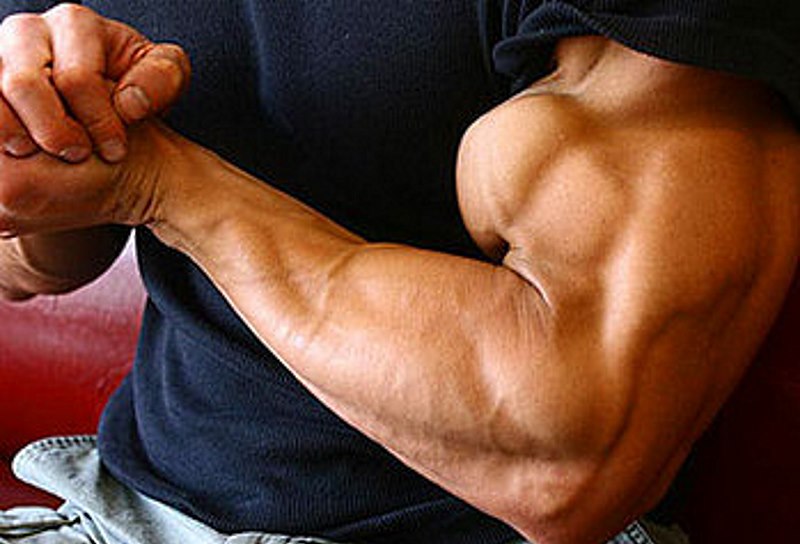Since the dawn of bodybuilding (or at least the last few decades), most articles dedicated to building glutes were for women. Estrogen, it seemed, was the necessary factor for wanting a better butt.
For guys, the focus was always on legs. Even though we all knew those multijoint exercises muscled up our posteriors, we just didn't want to admit our desire to fill out the backside of our jeans a little better.
Bret Contreras, PhD, CSCS, aka "The Glute Guy," is considered one of the world's foremost experts on glute training, having authored hundreds of articles in fitness publications, research papers, and even two books, including "Strong Curves: A Woman's Guide to Building a Better Butt and Body," with Kellie Davis. I sat down with him to ask everything I've ever wanted to know about glute training.
There's A Pretty Significant Emphasis In Women's Training On The Glutes, But Rarely In Men's. Why Do You Think That Is?
This question has baffled me for years. I suppose it's grandfathered in from the classic bodybuilding era. The classic leg day trains quads and hams, but glutes never seem to be mentioned. I guess people assume that the glutes get adequate stimulus from quad exercises like squats, lunges, leg presses, and hamstring exercises like deadlifts, Romanian deadlifts, and back extensions. While I agree that these are good glute exercises, I think you get better results by adding in barbell hip thrusts, lateral glute exercises, and high-rep work in general.
I do think it's improving, but not that fast. After all, we're dealing with decades of tradition. But at least it's heading in the right direction. Men should proudly train their glutes and shouldn't shy away from performing exercises that might not appear "manly" at first.
You're Known For Training Women, Especially Their Glutes. Would Your Approach To Guys Be Any Different?
My male workout partners and I train very similarly to how I train my female clients, so I wouldn't change it very much. I tend to program around 36 glute sets per week for women and a bit less—around 24 sets—for men. That way, the men can dedicate more volume to the various upper-body muscles they tend to like hitting hard.
Big, Strong Glutes Come With The Territory When Following Challenging Leg Workouts. What Exercises Specifically Emphasize The Glutes That A Guy Can Do Without Compromising His...How Should We Say...Testosterone?
I gotcha. I'd go with heavy barbell hip thrusts. I've given this a lot of thought and have come to the conclusion that how "manly" an exercise appears to be has more to do with tradition than the actual value of the movement.
The most popular glute exercises involve hip extension. For someone completely naïve to weight training, dropping into a squat might seem weird, as would bending over into a hip hinge or thrusting from a bench. So we can't worry about what exercises look like to others. We need to judge exercises on the basis of scientific evidence, focusing on those that do the best job building glutes—whether they appear manly or not. I think once we do that, those exercises will join the mainstream.
What About Lunges. Are Some Variations Of The Movement Better Than Others?
Yes. If you want to lunge for maximum glute development, go with either walking lunges or reverse lunges. Take a fairly long stride, step slightly out to the side on each step, lean forward slightly, sink deep, push through the heels, and power yourself out of the hole without letting the hips shoot up faster than the shoulders. Don't allow your torso to become more horizontal—or parallel to the ground—as you rise upward.
What Kinds Of Adjustments In Foot Placement Can Make Leg Exercises Like The Leg Press Or Hack Squat More Glute-Friendly?
The glutes actually receive a fairly similar training stimulus whether you place your feet high or low on the foot platform. What does change with foot placement, though, is the level of quadriceps versus hamstring stimulation. A higher/wider foot placement hits the hammies more, whereas a lower/closer foot placement hits the quads more.
We've Heard That Going Deeper Into The Hole On Squats And Other Multijoint Movements Hits The Glutes Harder. Is That True? And If So, How Does It Work?
It is true, but it requires further explanation. Glute EMG activity actually doesn't increase when moving below the parallel position. My lab recently confirmed this, as did a lab in Brazil. But there's more to the story than muscle activation. Range of motion factors into the equation too.
Quadriceps studies show that the deeper you go during leg extensions, the better it is for hypertrophy. If this same trend is true for the glutes, then full squats would indeed be better than parallel squats for stimulating glute growth.
Having said that, only those with the hip anatomy for it should do deep squats. If your hips just weren't built for squatting deep, rest assured that you're not leaving much on the table by squatting to parallel.
Can Cardio Machines Help Develop Your Glutes?
If you give cardio to beginners, their glutes will grow. But they won't grow that much unless they start with world-class glute genetics. The vast majority of people—those without the "right" genes—need resistance training for their glutes to undergo substantial growth. If they're performing the right glute exercises regularly, they'll hit all the fibers in their glutes—including the type I and type II fibers—and see some real growth.
I don't think steady-state cardio does much to add stimulus to the glutes. In fact, cardio can hamper glute development if done excessively. Runners and swimmers have markedly less glute development than ground-sport athletes and powerlifters, for instance.
HIIT training, though, would definitely be effective for building glutes. Even so, it still can't build glutes like resistance training does. For the best glute growth, stick with hip thrusts, squats, deadlifts, lunges, and back extensions.
We Know Guys Tend To Store Body Fat Around Their Midsections, But Does That Extend To Their Glutes, Too?
There are always exceptions to the rule, but most men don't store excessive amounts of fat on their glutes. The good news is that strength training and a good diet will both build glute muscle and lean out your entire body to reveal your athletic, powerful, and manly appearance.
Source: http://www.bodybuilding.com/
